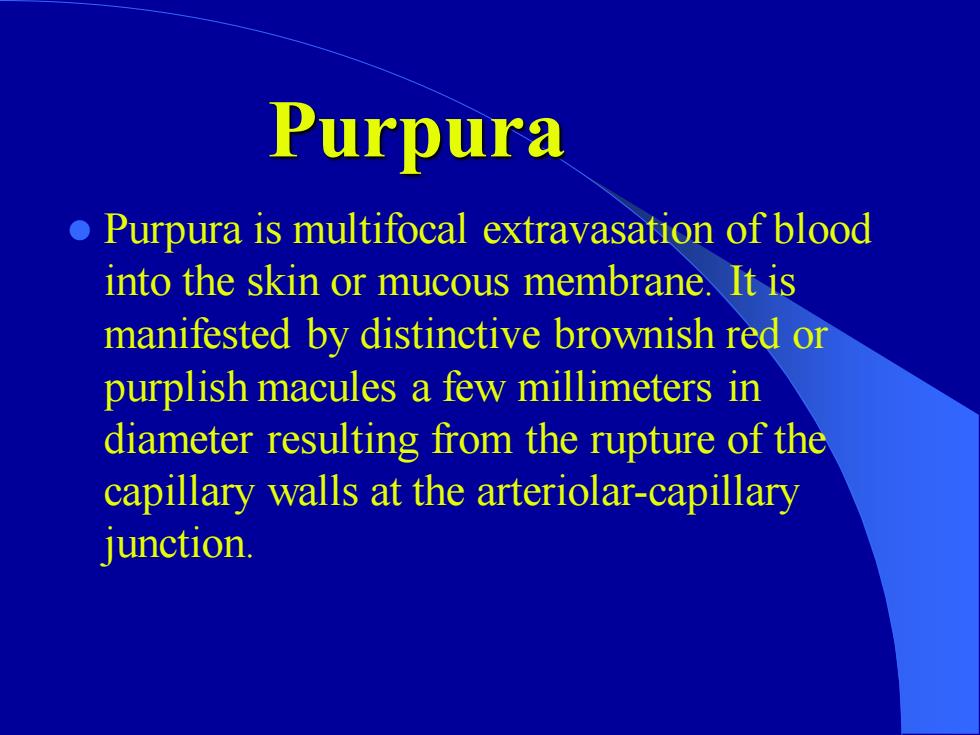
Purpura Purpura is multifocal extravasation of blood into the skin or mucous membrane.It is manifested by distinctive brownish red or purplish macules a few millimeters in diameter resulting from the rupture of the capillary walls at the arteriolar-capillary junction
Purpura ⚫ Purpura is multifocal extravasation of blood into the skin or mucous membrane. It is manifested by distinctive brownish red or purplish macules a few millimeters in diameter resulting from the rupture of the capillary walls at the arteriolar-capillary junction
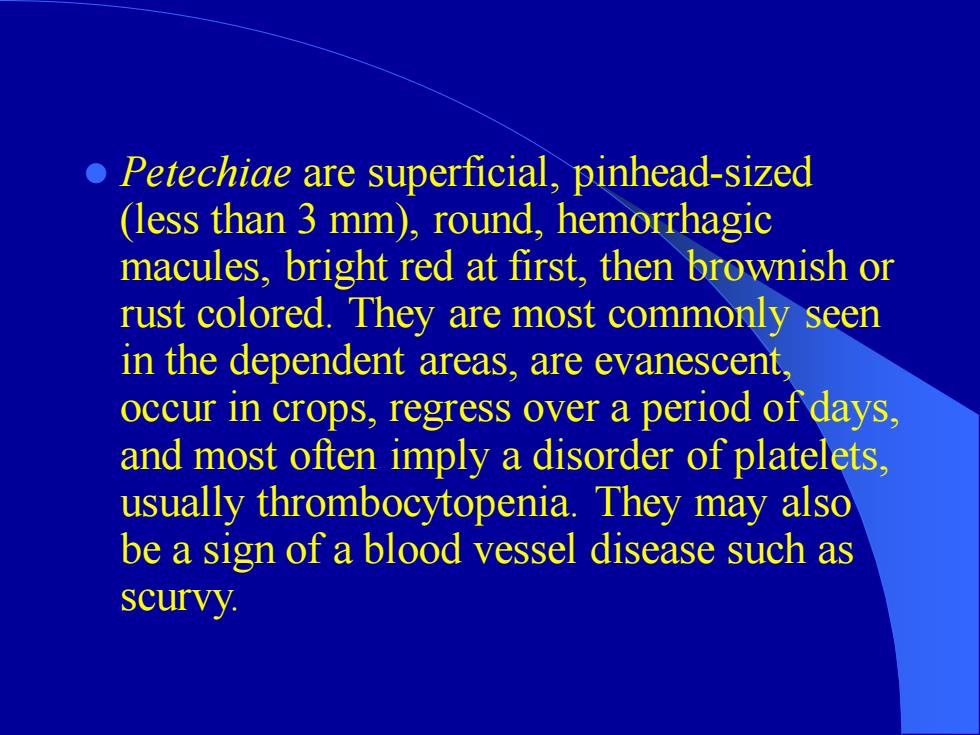
Petechiae are superficial,pinhead-sized (less than 3 mm),round,hemorrhagic macules,bright red at first,then brownish or rust colored.They are most commonly seen in the dependent areas,are evanescent, occur in crops,regress over a period of days, and most often imply a disorder of platelets, usually thrombocytopenia.They may also be a sign of a blood vessel disease such as scurvy
⚫ Petechiae are superficial, pinhead-sized (less than 3 mm), round, hemorrhagic macules, bright red at first, then brownish or rust colored. They are most commonly seen in the dependent areas, are evanescent, occur in crops, regress over a period of days, and most often imply a disorder of platelets, usually thrombocytopenia. They may also be a sign of a blood vessel disease such as scurvy
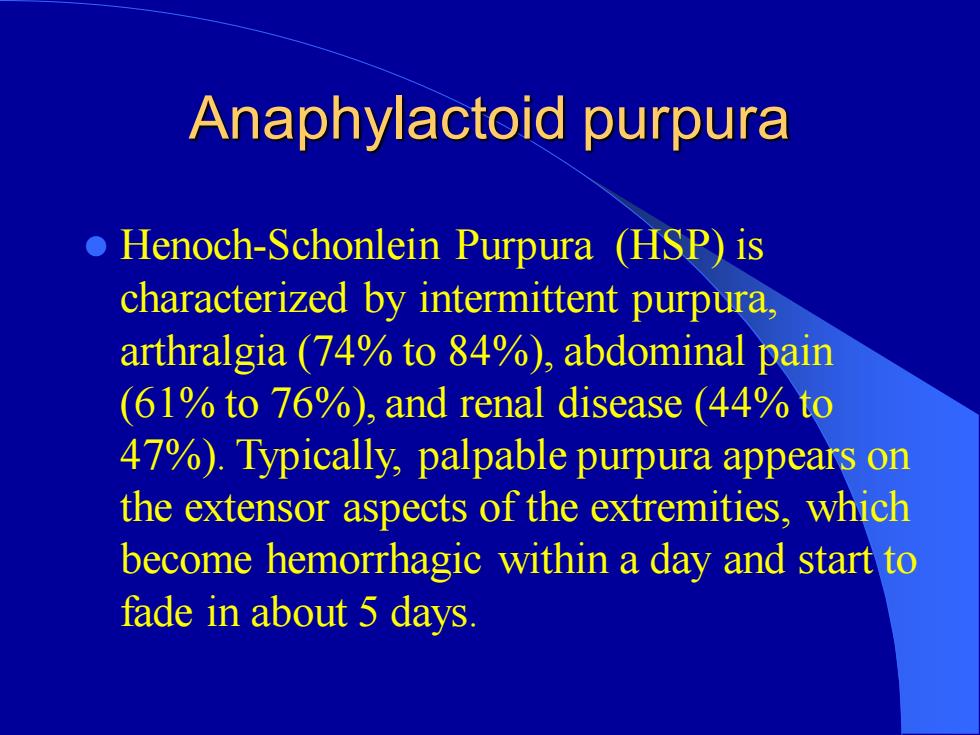
Anaphylactoid purpura Henoch-Schonlein Purpura (HSP)is characterized by intermittent purpura, arthralgia (74%to 84%),abdominal pain (61%to 76%),and renal disease (44%to 47%).Typically,palpable purpura appears on the extensor aspects of the extremities,which become hemorrhagic within a day and start to fade in about 5 days
Anaphylactoid purpura ⚫ Henoch-Schonlein Purpura (HSP) is characterized by intermittent purpura, arthralgia (74% to 84%), abdominal pain (61% to 76%), and renal disease (44% to 47%). Typically, palpable purpura appears on the extensor aspects of the extremities, which become hemorrhagic within a day and start to fade in about 5 days
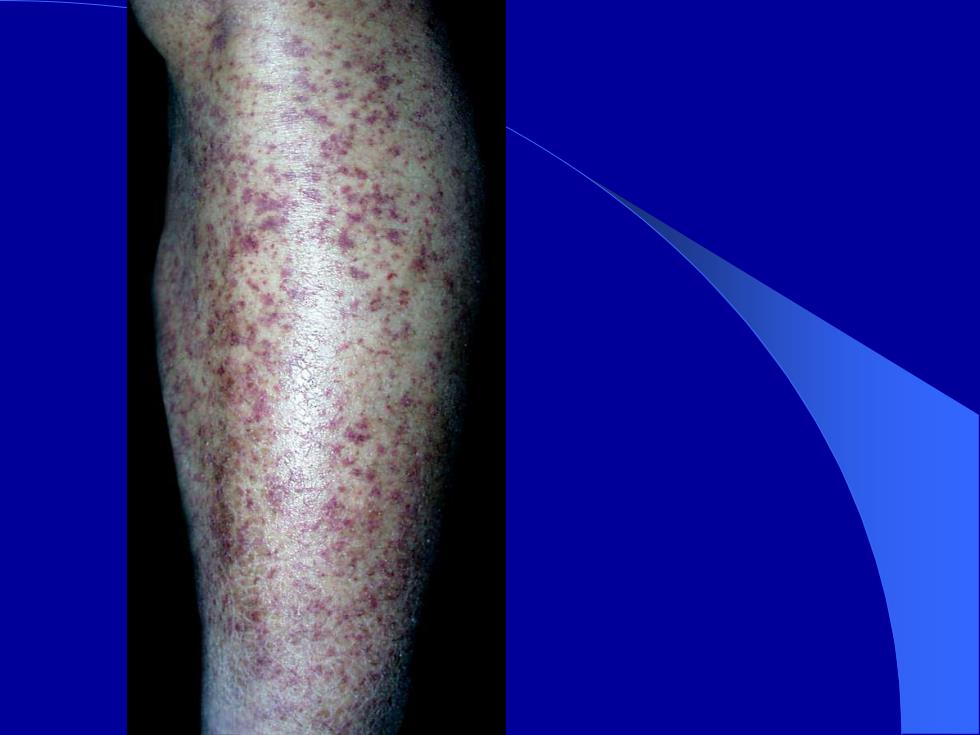
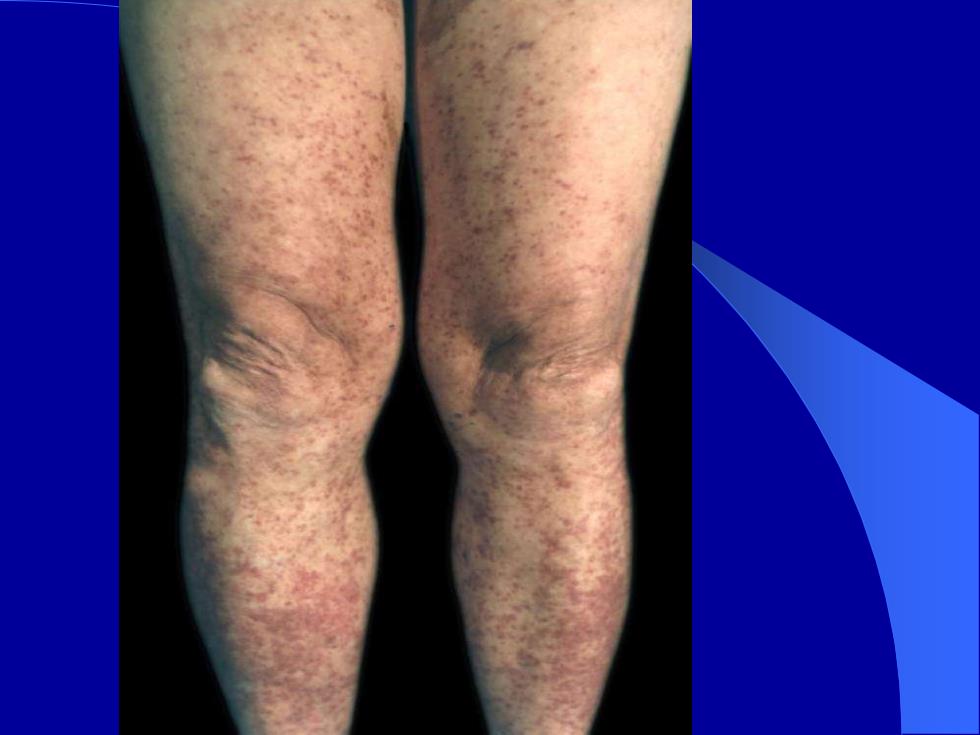
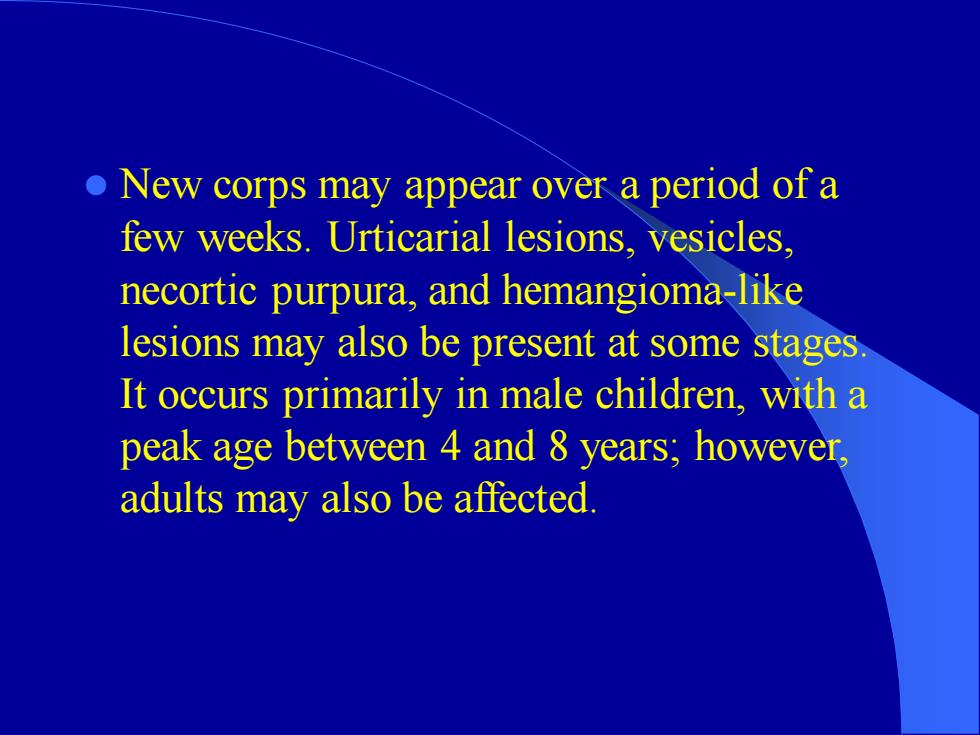
o New corps may appear over a period of a few weeks.Urticarial lesions,vesicles, necortic purpura,and hemangioma-like lesions may also be present at some stages. It occurs primarily in male children,with a peak age between 4 and 8 years;however, adults may also be affected
⚫ New corps may appear over a period of a few weeks. Urticarial lesions, vesicles, necortic purpura, and hemangioma-like lesions may also be present at some stages. It occurs primarily in male children, with a peak age between 4 and 8 years; however, adults may also be affected

o A viral infection or streptococcal pharyngitis are the usual triggering event. Other possibilities include other bacterial infections,food,drug,chemical toxins,and lumphoma.Phenacetin,tetracycline, erythromycin,quinidine,and insect bites have all been incriminated
⚫ A viral infection or streptococcal pharyngitis are the usual triggering event. Other possibilities include other bacterial infections, food, drug, chemical toxins, and lumphoma. Phenacetin, tetracycline, erythromycin, quinidine, and insect bites have all been incriminated

o In about 40%of cases the cutaneous manifestations are preceded by mild fever, headache,joint symptoms,and abdominal pain for up to 2 weeks.Arthralgia progressing to arthritis produces periarticular swelling around the knees and ankles
⚫ In about 40% of cases the cutaneous manifestations are preceded by mild fever, headache, joint symptoms, and abdominal pain for up to 2 weeks. Arthralgia progressing to arthritis produces periarticular swelling around the knees and ankles
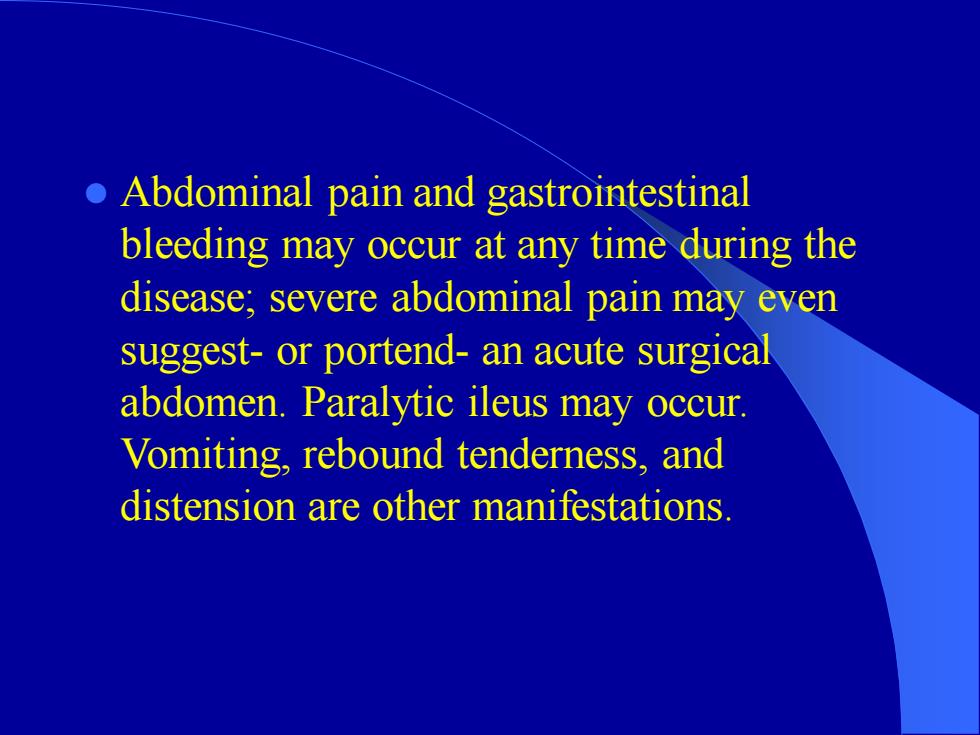
o Abdominal pain and gastrointestinal bleeding may occur at any time during the disease;severe abdominal pain may even suggest-or portend-an acute surgical abdomen.Paralytic ileus may occur. Vomiting,rebound tenderness,and distension are other manifestations
⚫ Abdominal pain and gastrointestinal bleeding may occur at any time during the disease; severe abdominal pain may even suggest- or portend- an acute surgical abdomen. Paralytic ileus may occur. Vomiting, rebound tenderness, and distension are other manifestations

o Renal involvement manifests as microscopic or even gross hematuria and may occur in 25%or more of patients.The long-term prognosis in children with gross hematuria is very good;however, progressive golmerular disease and renal failure may develop in a small percentage, so that careful follow-up supervision is necessary for those with hematuria
⚫ Renal involvement manifests as microscopic or even gross hematuria and may occur in 25% or more of patients. The long-term prognosis in children with gross hematuria is very good; however, progressive golmerular disease and renal failure may develop in a small percentage, so that careful follow-up supervision is necessary for those with hematuria